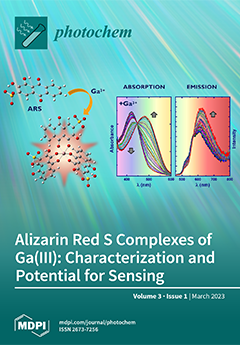Open AccessArticle
Bismuth Vanadate-Nanostructured Graphite Electrodes for Rhodamine B Photoelectrochemical Degradation
by
Bruna Guimarães Isecke, Arthur Saldanha Guimarães, Guilhermina Ferreira Teixeira, Flavio Colmati, Aparecido Ribeiro de Souza, Isaac Yves Lopes de Macêdo, Lucas Mattos Duarte, Sergio Botelho de Oliveira, André Gabriel Carmo Costa, Vernon Sydwill Somerset and Eric de Souza Gil
Viewed by 1919
Abstract
Electrocatalysis is a promising way to treat water contaminated by harmful organic compounds. The combination of nanoparticles supported on a conductive substrate allows degradation to occur under less energetic conditions. This work evaluated the effect of deposition of bismuth vanadate (BVO) particles on
[...] Read more.
Electrocatalysis is a promising way to treat water contaminated by harmful organic compounds. The combination of nanoparticles supported on a conductive substrate allows degradation to occur under less energetic conditions. This work evaluated the effect of deposition of bismuth vanadate (BVO) particles on pencil-type graphite electrodes. BVO particles were obtained by ultrasonic irradiation with coprecipitation. Then, they were deposited on the surface of a graphite electrode by the impregnation method. A 2
3-design was used to optimize electrode fabrication. Matter Dispersion Spectroscopy (SEM/EDS), X-Ray Diffraction (XRD) and Dynamic Light Scattering (DLS) were used for characterization. Electrochemical characterization was performed by electrochemical impedance spectroscopy (EIS) and cyclic voltammetry (CV). The results confirmed the synthesis of BVO@C (BVO/graphite). Furthermore, BVO@C significantly increased the electroactive surface area of the electrode, decreased the electron transfer resistance, and significantly increased the electron transfer rate to a greater extent than the electrode without any modification. To prove that the performance of BVO@C is better than the pure electrode, photoelectrocatalysis (PEC) and electrocatalysis (EC) were performed in a rhodamine B (RhB) solution. The results showed that in 5 min of treatment with unmodified electrode, BVO@C EC system and BVO@C PEC system, there was degradation of 31.53%, 46.09% and 58.17% respectively, reaching 95%, 98% and 99.64%, respectively, in 30 min. The reaction rate constants were calculated and to be found k = 0.10272 m
−1, k = 0.12221 m
−1 and k= 0.15022 m
−1 for the unmodified graphite, BVO@C EC System and BVO@C PEC system, respectively. These results demonstrate that the BVO@C electrodes are efficient for application in a wide range of treatments, including the treatment of organic pollutants.
Full article
►▼
Show Figures




